|
By GREENBIRD56 - 4 Years Ago
|
|
Usually - if the PCV vacuum leak is too great - it will really screw up your idle settings. The old original Ford intake manifolds that had the PCV screwed into them - have an orfice drilled beneath the port to throttle the air flow from the two chambers of the intake. The two inches of mercury sounds scientific enough, but I would think that the smallest value that will work as the revs rise - is the one you want - not some preconceived number.
|
|
By GREENBIRD56 - 4 Years Ago
|
I went digging into the old photo files I have - found a couple worth sharing.....
.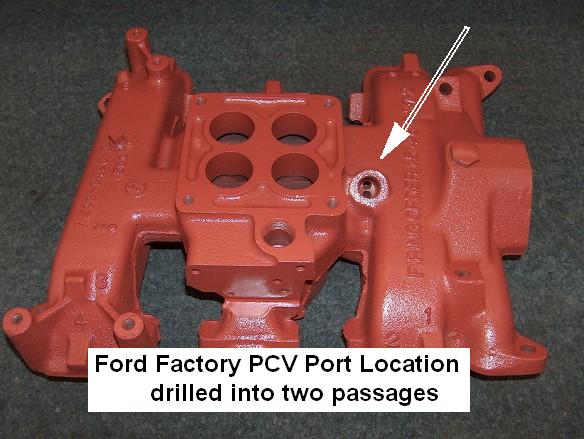
Ford's method of sampling the two chambers of the factory "H" manifold.
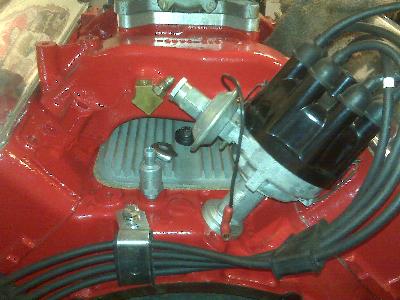
McTim's method of tapping the block for a GM PCV (it has the inverted check valve).
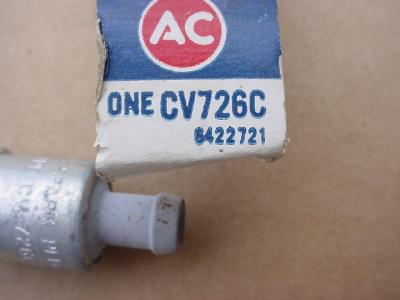
|
|
By GREENBIRD56 - 4 Years Ago
|
The valves have differing amounts of flow capacity - if you have used one with high flow in a spot with little baffling, oil is going to be drawn to it. The Ford 292 valve made for the manifold I pictured above, did not work worth a hoot when I adapted it to the valley cover. Sucked too much oil. After a fellow showed me the manifold with the two built in throttles, a light went on in my head and I added an orifice inside the hose to the carb base. One of our members - in a past years thread,came up with a Ford valve that was used in an 80's four cylinder application that worked - without externally regulated flow.
There is a good chance that Tim's AC valve works well with one of his freshly re-built, low blow-by motors - might not be so clean at 60K miles. I believe Ted tried out the McMasters valve in some of his engines, don't know if he kept it up or found yet a better way.
|
|
By GREENBIRD56 - 4 Years Ago
|
Sorry "Kultulz" but I've seen multiple examples of Y engines plumbed with the PCV fed from the port shown - regardless of your preference. Seemed tto be working very well. The two orifices go into each side of the H manifold and combine the vacuum source as would be desired. Very common to find it on sixties pickups with the two barrel.
The rear entry of Tim's AC type port isn't any more exposed to the cam drive than the Ford tin.....
|
|
By PF Arcand - 4 Years Ago
|
Not mentioned in this set of postings is the sometime issue of the valve sucking in excessive amounts of oil. A buddy who has an aftermarket cam in his Y-block engine, has moved his valve twice & used an oil seperator, trying to reduce oil consumption thru the valve.. My setup which is off the former rear draft tube hole c/w the original baffle underneath, still shows some oil consumption. Due to the Covid 19 & so on, I haven't driven it enough to really get a handle on the level of consumption..
|
|
By Daniel Jessup - 4 Years Ago
|
I am interested in the photo - even the before and after if you have them. I have a 57 dual four barrel intake and the E code valley pan - both parts are just about ready to go, and I was just thinking that I would use the same PCV setup I have on a B intake and regular valley pan with that same rear provision for crankcase fumes. I guess the 57's had the long crankcase ventilation tube that exited at the bell housing? I never have compared but if so it sounds like there is a height difference between that small "teapot spout" PCV adapter and the fitting for the long crankcase ventilation tube?
this is what I have now underneath my B intake...
.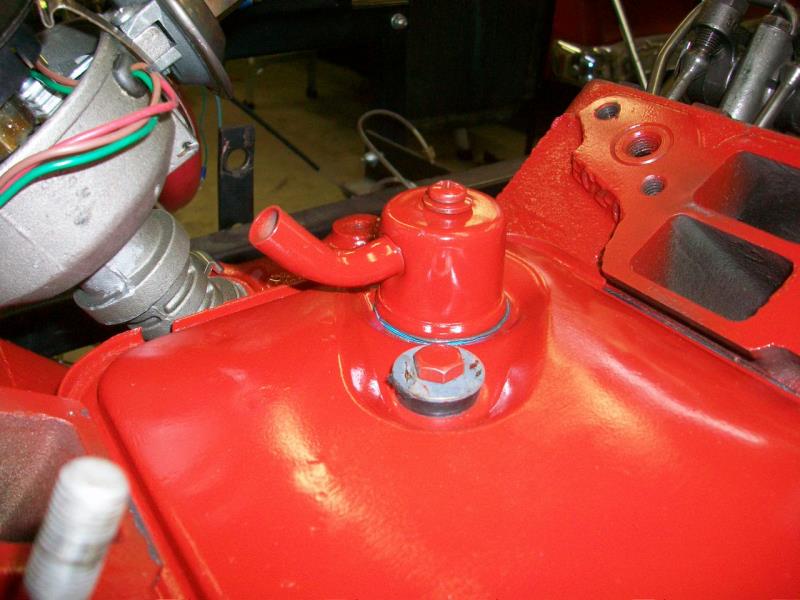
|
|
By Daniel Jessup - 4 Years Ago
|
|
Now that looks pretty nice!
|
|
By KULTULZ - 4 Years Ago
|
This photo is not a correct source for a PCV signal. It (the manifold shown) is a 55 4V and that vacuum source is intended for the booster and vacuum pump. If used for a PVC signal, fumes will be ingested into only two cylinders, leading to possible plug fouling.

The below example of mounting the valve behind the valley pan provides no splash protection from the cam drive.

If using the CASCO KIT or just inserting a valve into the valley pan opening without the adapter does not keep the system from ingesting fumes/vapor. The OEM setup (and it was a very early CCV design) is the best method (IMO) of properly setting up a functional FYB system.
There are two PCV Systems design, one OPEN and the other (later design) CLOSED. The open draws fresh air through the oil filler cap and when the engine is shutdown, may expel excess crankcase pressure. This is what you smell after the engine is shut down.
CLOSED uses an oil filler cap with nipple to draw fresh air from the air cleaner housing (having to add a nipple) through a connecting hose.
|
|
By KULTULZ - 4 Years Ago
|
Now this little detail ain't nothing but class -

|
|
By KULTULZ - 4 Years Ago
|
No reason to be sorry.
The valve mounting on the actual block behind the valley pan has no provision/protection for/of the splash deflector located on the underside of the actual valley pan. The valve inlet is fully exposed to splash from the distributor drive. That is fact. Those tapped holes he re-sized are meant for throttle linkage mounting on some applications.
The vacuum source shown in the ILL is not meant for a PCV signal as I explained. It is tied into separate runners and not the plenum as to not distribute the fumes among all cylinders equally. It will load the individual runners/cylinders it is sourced to. I have seen that Ill many times and it's description is incorrect. That is someone's interpretation.
FORD did use that method on its' early sixties 2V 292 but that does not make it efficient. Most likely is was done for cost. The 4V install using a vacuum signal inlet carb spacer is correct.
All of this is/was early design and significant improvements have been made after. No reason (IMO) not to ventilate the crankcase in a more efficient manner.
|
|
By KULTULZ - 4 Years Ago
|
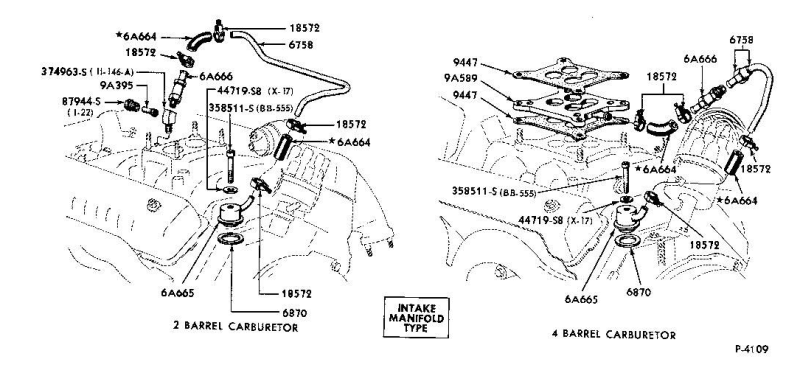
Just to aggravate everyone a little further-
The above ILL was used in the 1957/63 LT MPC. The 2V system was a carry-over from the PASS CAR design - first used. FORD kept using this system on both car and truck until the FYB was retired. The 4V version was LT only as there was no 4V FYB used in PASS CAR (61/62).
If you notice in the 4V install, there is a tube (6758). This was actually a cooling tube wheres any mist that got by the valley pan baffle cooled somewhat and dropped back down the tube before being ingested into the engine (hopefully).
PCV is an emissions device but it also a way the crankcase is ventilated of blow-by. All depends on engine condition, fuel curve and strength of vacuum signal/properly calibrated valve. The only way to determine if the system is functioning properly is by the vacuum pull test (as mentioned) and/or oil analysis,
Seems "to work fine" is not an option on a hi-dollar engine (IMO anyway).
|
|
By KULTULZ - 4 Years Ago
|
VERY CLEAN INSTALL!
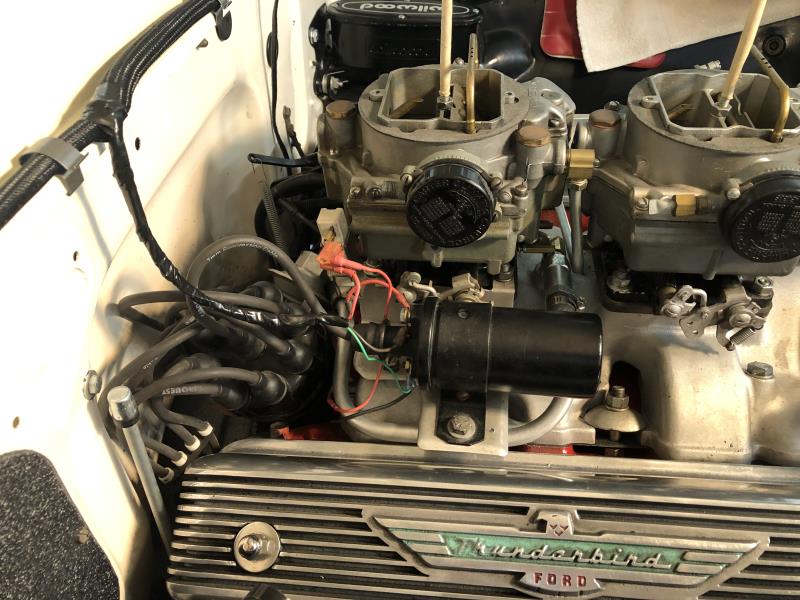
|
|
By miker - 4 Years Ago
|
|
I've used those "tubes" in chrome on the finned aluminum valley covers. Fitting in the bung to the aircleaner. PCV valve in a baffle in the valley cover. I've wondered if I couldn't have saved the baffle welding in the valley cover by using the bung in the fill tube for the PCV valve as the Z used.
|
|
By Rudder2fly - 4 Years Ago
|
|
Phil, can you give me the Casco part #?
|
|
By Rudder2fly - 4 Years Ago
|
|
Thanks Phil.
|
|
By FORD DEARBORN - 4 Years Ago
|
The paper trick should work OK if you can get it to seal. That PCV looks just like the original valve that was on my 64 F100 which worked fine. What I often do to check the system is hold the palm of my hand over the oil filler pipe for about 5 seconds or so. A slight vacuum should be felt and a woosh of air should be heard when uncovering the filler pipe. Don't forget to block the dipstick tube. BTW, nice work on modifying the PCV hose connector. Hope this helps, JEFF...........
|
|
By FORD DEARBORN - 4 Years Ago
|
I'm sure everyone knows this but I'll mention anyways, an air leak that can exist at the last most rearward unused threaded hole next to the temp sender. Same for the rear of the right cylinder head but that hole is usually used for securing one of the spark plug wire brackets. Those threaded holes are drilled through into the push rod hole so make sure the "dummy" bolt is short enough to NOT strike the push rod. There are also a couple holes in the block near the left rear corner of the valley cover but I can't remember if they penetrate the engine interior like the above mentioned cylinder head holes. It was mentioned in a previous post a vacuum gauge would be attached. Lets us know how that goes.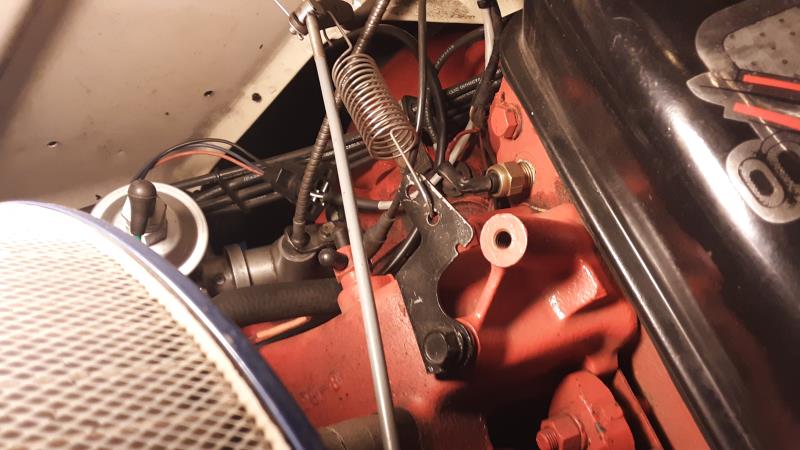
|
|
By FORD DEARBORN - 4 Years Ago
|
Very nice work and thanks for the vacuum information. Where do you get the "snake" hose? That would be very useful for just such a purpose and much more.
|
|
By FORD DEARBORN - 4 Years Ago
|
DLR, found the "snake" hose source, thanks, JEFF......
|
|
By DryLakesRacer - 4 Years Ago
|
I think I found something not mentioned or missed by me when adding a PCV system using the factory fitting that screws into the rear of the valley cover. It hits a dual quad manifold right at the screw that secures it. I’m going cut and make a step in it to keep the tube which is attached to it. I might make another baffle near the bottom too.
Also included in my revision was to replace the right side exhaust manifold to a 57 since it was still a 55-6 while left one was a 57 when I bought the car. I found a perfect one years ago and because I removed the under hood heater parts for an AC unit I thought this was the time to change it too.
Seems there is always something. I’ll post a photo after I get it revised...
|
|
By DryLakesRacer - 4 Years Ago
|
Yep that exactly what mine looks like. My intake is an Edelbrock and doesn’t need the dipped valley cover. I test fit my new Blue Thunder and it missed. I just don’t want to give up my dq yet.
I’m going to step it with the tube to the back because of the dq set up. Not much room, hoping to put the valve at the back of the front carb with a 90 degree fitting.
You’ve got to remember these PCV fittings didn’t come until 1962 and dqs were long gone. I remember the breather tube from the rear In 57- up and I thought it was 1” in diameter and it should have been on 57 dq Thunderbirds.
I’m buying a 3/8” and 1/2” diameter fuel lines with multiple bends to make this work. I did the same thing in my sons GMC with 3/2’s on a Howard log manifold and it works perfect with a 65 scrubelle PCV valve. It feeds to the center carb from the oil fill tube on the right side of the crankcase/block.
I’ll have a photo tomorrow if all goes well..
|
|
By DryLakesRacer - 4 Years Ago
|
Finished product. Cut with a cut off disc in my 4” grinder. I’m showing it as I made it. I could kept the original top but the metal is stretched pretty thin on the bend. I welded it with my oxy/act unit. Didn’t trust my mig skills and don’t have tig. Steel parts are close to .060” because I had it. A lot of work for something no one will ever see.
  
|
|
By DryLakesRacer - 4 Years Ago
|
I’ve completed the engine work and it seems the minor oil leaks have been found and fixed for now. The engine runs great and the UniSyn readings are equal and higher than they have ever been.
The tapped fitting between the 2 carbs is my vacuum source where I’m planning on placing a screw in PCV valve.
I’m wondering from the guys who have installed the valve checked the vacuum “leak” thru the one they installed.
According to every thing I’ve read with the engine running and everything sealed there should be a 2-3 inches of vacuum on the oil dipstick tube which is an ez place to check.
I’ve heard if it can hold a piece of paper on the breather or oil fill tube it was good.
This is the PCV I’m going to use. It’s part number is PV 580 and listed for a 1961-2 Ford or Mercury 292.
|
|
By DryLakesRacer - 4 Years Ago
|
Thanks Jeff, I have heard that too. The 2-3 inches of vacuum was off the internet on a conversion made for 50’s GM inline 6 cylinders. The person knew the engineering of the valves and 5”
Is considered too much. I have a vacuum gauge so once it’s on I’m going to tape off the oil fill and give the dipstick hole a try.
I have already added a rubber washer to the dipstick for a seal.
Also thank on the PVC info.
|
|
By DryLakesRacer - 4 Years Ago
|
Dearborn, funny you should mention these threaded holes. I don’t want to get involved with what I mentioned earlier as engine repairs but it consisted of removing the left cylinder head. On my 56 that last threaded hole next to the water temp sender had a short cap screw in it with a star lock washer for the body ground from the firewall.
Since the intake was off and the right rocker cover off for me to install a 57 exhaust manifold on that side I noticed it was holding the right side upper spark plug wire guide. Other inline engines I race these held coil mounts at the center of the cylinder head.
I run a belt driver vacuum pump on my racing engines and am very aware of causing problems from not paying attention. Since I run one I’ve had many discussions with other races who have told me they could not get a good vacuum. As simple as this seemed, I asked them which way they installed the rear main lip seal. You should have seen the look on their face when I said it... priceless. I didn’t have the problem since mine were rope..
Greenbird. My thought on what you said is to solder up the brass fitting that is between the 2 carbs and drill an oriface if necessary. I have 2 different PVC valves and the one I’ve shown list for a Y-Block has less flow by sucking on it than a certain 283 engine used in 1965 that screwed into a fitting behind the 2 barrel carb. All of what you say makes perfect sense along with the engineering I’ve read concerning the use of a PCV valve...
|
|
By DryLakesRacer - 4 Years Ago
|
I’ve received the block off plate and ran the engine. Minor carb adjustments were needed. A vacuum gage on the crankcase thru the oil dipstick with everything sealed off was 1-1/2 inches. The oil fill will hold a blue paper shop towel at idle in gear with AC on. I also placed the air cleaner bottom and the same paper will stay on it. The dipstick has a leather seal at the top.
Following Dearborn’s test; I held the palm of my hand on the oil fill tube. When I removed it there was a whoosh sound.
If this helps anyone else I’m happy.. for now I’m thru being under my car for a while I hope.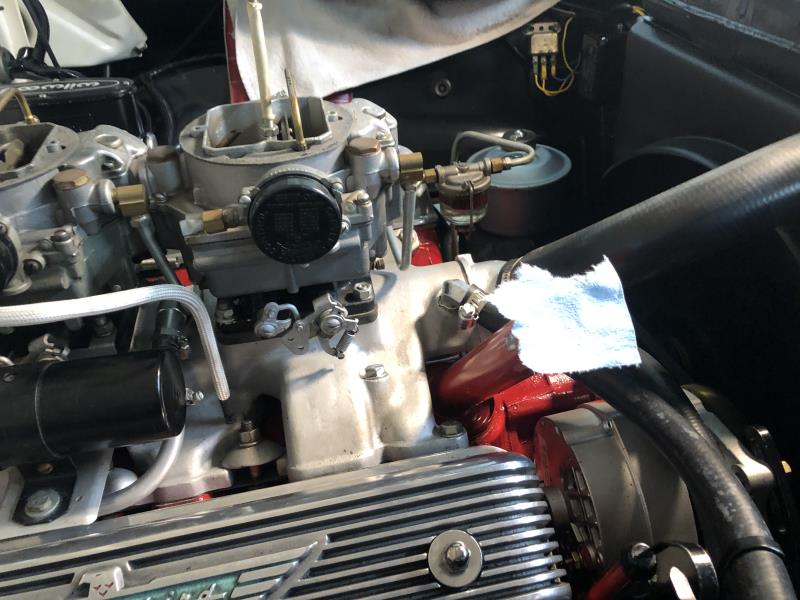 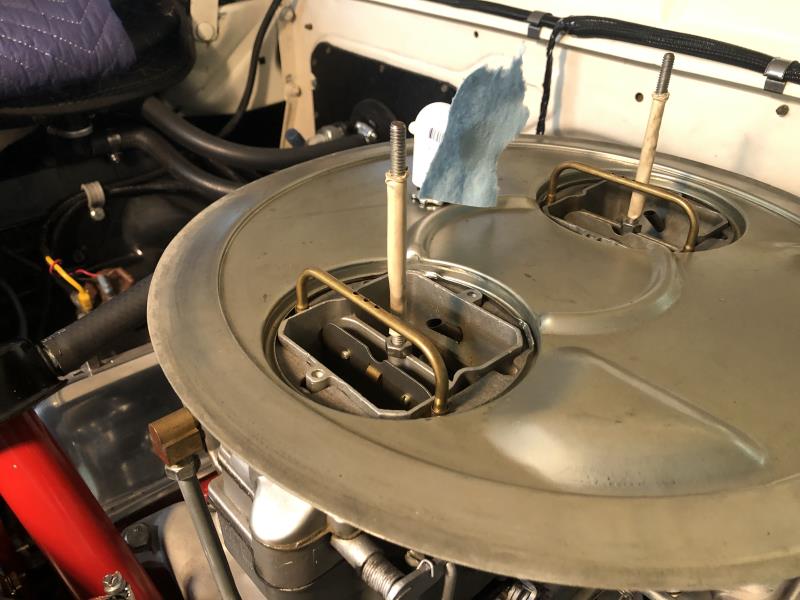
|
|
By DryLakesRacer - 4 Years Ago
|
Thank you, took too long but happy so far. Google “universal molded fuel line hose”
Amazon took a week. Many sizes, not inexpensive but when needed a life saver.
|
|
By DryLakesRacer - 4 Years Ago
|
Florida Phil... I must heartily agree with the smell. Our garage is connected to our home with kitchen door access and after 2 times out driving and coming home there is definitely a smell difference in the garage. I’ve lived with the open system for 10 years and forgot how nice it is for the garage not to have the old burned oil smell.
So far the pans under the engine do not show any sign of drips. The resealing of the oil pump and stuck bypass I’m sure helped with that.
|
|
By DryLakesRacer - 4 Years Ago
|
Florida, did you ever notice how much vapor or blowby was coming out of your breather before you put on the kit? My wife has complained about the smell for 10 years when I pull into the garage and it’s cooling down.
Did the CASCO include a hose from the oil fill to the inner area of the air cleaner so the air being sucked through your engine is filtered or does it rely on the filter inside the oil fill line cap.
Also how many miles from rebuilding your engine. I’m interested because mine is right at 10k.
The CASCO kit would be tight with dual quads or not make it from the photo but it is sure a clean installation. Thanks
|
|
By DryLakesRacer - 4 Years Ago
|
Thanks Florida. That sounds like what mine looks like from the road draft tube. I figured the rear style you have looks like the one Ted always shows us and it’s nice to see one without the hose coming around to the front of the supplied hose connection on the typical available aftermarket carbs today.
Yes with dual quads everything is very tight but I just can’t give them up yet and it’s why I cut the original hose teapot looking connector on the factory valley cover from the early 60’s. When I was putting mine back together last week I took the high rise I have out of the box and set it on with a couple of different carbs to see what it would look like. It has no markings for either Blue Thunder or Mummert; I bought it about 5 years ago.Enjoy: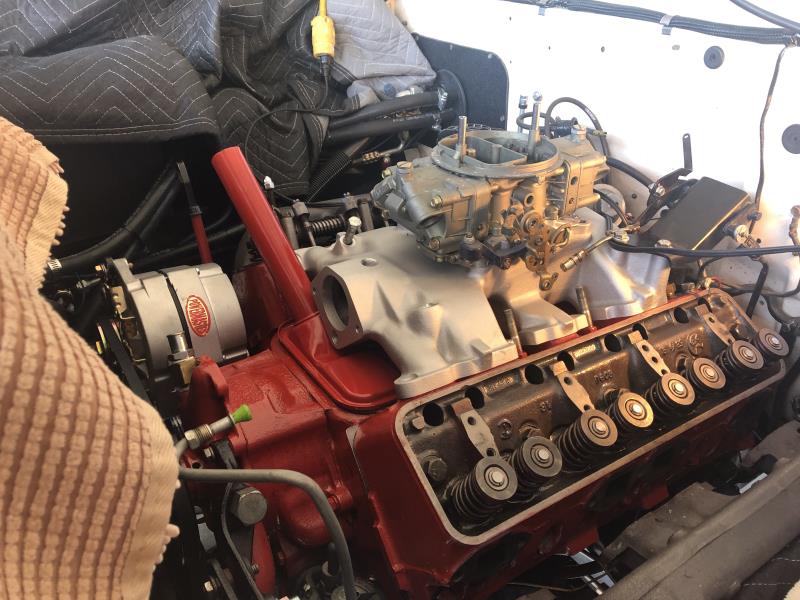 
|
|
By DryLakesRacer - 4 Years Ago
|
|
Greenbirds . . All my screw-in style PCV valves went into the intake under the carburetor. A certain Z-28 had it’s screwed into the oil fill tube at the front of the intake manifold and it had a sealed 1/4 turn cap. I don’t believe oil could have ever been drawn up that high and there were no baffles. I have one of those tubes. I wonder if McTim puts baffling in the valley....
|
|
By DryLakesRacer - 4 Years Ago
|
After last weekend I have found out I did not repair my oil leaks as I mentioned above. In fact they were worse. All the places I changed gaskets were good and everything seemed to be centered on the oil filter and oil pump. I tried to no avail to remove the oil pressure bypass while under the car. I removed the oil pump and it was stuck. My oil pressure by a gauge under the car I installed was 55 warm at idle and 75-80 at 1500. I do not know how high it would have gone. I just moved the carb up on fast idle and went under to look. I normally have a warning light only.
I removed the pump and cleaned every and it is free now. I can depress the spring with a small screw driver at the small end against the case. I will run it today. I also changed the filter plate gasket after stoning it perfectly flat, filter mating surface too. The pump is a gerotor in a cast iron case and looked excellent inside.
I will finish the PCV valve plumbing as soon as I install the side plate. I choose to purchase a Ford factory one instead of making it. It arrives today. I want the engine to run and not drip oil before I finish it. Minor ok, what was happening to me no.
It will be interesting to see the inches of vacuum on the crankcase with the engine at idle. Hoping for the 2-3 since I’m going to use a Valve made for the 61-64 Ford/Merc 292 and connected the same way. I do understand the addition of an oriface in the line.
This has turned into way more than I thought and the information from others experience I’d priceless.
|
|
By DryLakesRacer - 4 Years Ago
|
|
Start and warm was as good as could be expected. I was under the car watching the gauge and it shot to 85psi for a split second and then down to 60; to me proving the bypass is working as designed. The fast idle was up on the first setting on the rear principle carb which is normal. Within a few minutes and some warmth it was a little bit under 40 in gear idling. At 165-170 with water flowing by watching the upper tank in the radiator at idle it was 35. Fast idle hot 1500 rpm was 55. I can live with all of it. Now to fit the PCV line and get to why I started this thread..
|
|
By DryLakesRacer - 4 Years Ago
|
I have completed the PVC plumbing for my dual quads. I’m not a “hose” lover and like things as neat as my skills can accomplish. Under or at the back/front of the rear carb would probably be best but I’m going with the threaded hole in the center.
The fuel hose in the photo is available in different sizes and I used 1/2” I bought them when I did my sons 302 GMC for his PCV and water lines. I buy them for the bends. I also purchased a roll of 1/2” aluminum tubing and a 1/2” bender so it made this installation easier since I had the tooling and a lot of tubing to make mistakes.
The valve is for a 61-2 Mercury/Ford and pickups to 64. I’m waiting for the block off for the side breather to test it all. The last photo is of the air filter which shows that air entering the engine will be filtered air from the inside of the air cleaner.
After the test run yesterday for the oil pump repair there was no oil evidence on the washer/dryer pans I keep under the car or a drip starting anywhere on the engine.
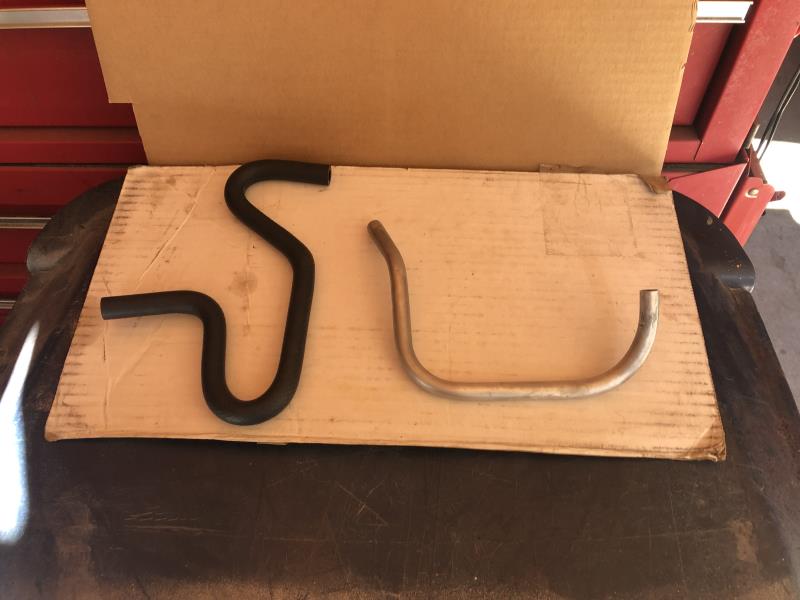   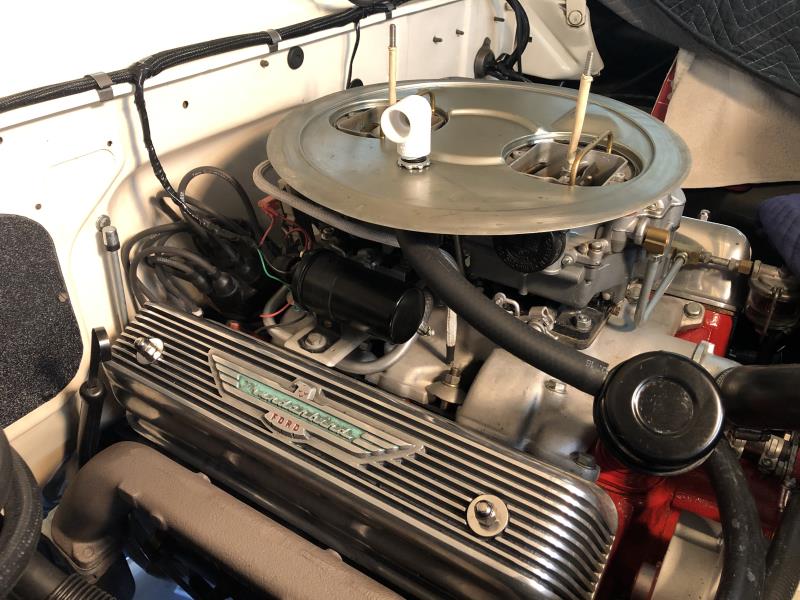
|
|
By 57RancheroJim - 4 Years Ago
|
This illustration may help that shows the 2V and 4V set up. I run my PCV line straight into a port on my 390 Holley.

|
|
By Florida_Phil - 4 Years Ago
|
FYI. I tried both dual quad and three deuce Edelbrock intakes on my Tbird. At the time, I still had the stock down draft tube on my engine. The back of the multi-carb Edelbrock intake contacted the down draft tube, which required cutting a notch out of the top of the tube.
|
|
By Florida_Phil - 4 Years Ago
|
You guys are great. I just installed a PCV in my TBird. I used a Casco kit that uses a PCV in the down draft tube hole in the valley tray and a plate under the carburetor. I was wondering how I could tell if it was working when I read this post. Awesome!
|
|
By Florida_Phil - 4 Years Ago
|
My PCV Install went well. I know most members have already done this. I put it off for a long time. The original draft tube is gone. So is the smell, which makes my wife happy. The idle seems smoother too. The Casco Thunderbird kit comes with the rubber groomer, pcv valve, hose and the 1/2" carb plate. The only modification I had to make was cutting the hose to fit my engine.
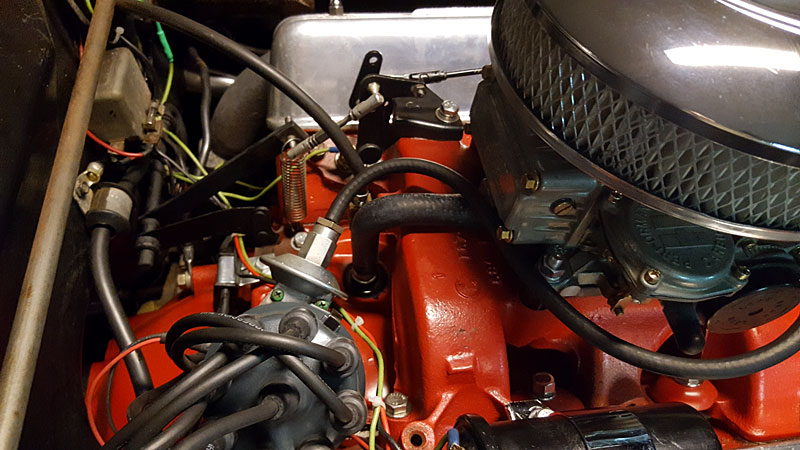
|
|
By Florida_Phil - 4 Years Ago
|
I rebuilt my motor two summers ago. I have driven 2-3000 miles since the rebuild, The amount of vapor coming from my down draft tub was not excessive. However, you could see fumes drifting out. My garage is connected to my house. Whenever I would start the car in the garage, the house would smell like gas and exhaust fumes. As you can imagine this made my wife unhappy. My cam is a somewhat bumpy at idle, so I'm sure that added to the fumes. After the PVC was installed, I put my hand over the oil fill and I can feel vacuum. I believe it will help to keep oil leaks to a minimum. The tube in the Casco kit runs from the PCV to the plate under the carburetor. I'm not sure where you would connect it with dual quads. Adding a PCV is a worthwhile upgrade.
|
|
By Florida_Phil - 4 Years Ago
|
Rudder2fly (1/10/2021)
Phil, can you give me the Casco part #?
Part # 6758A PCV Conversion Kit - 57 4bbl - 1 Per car Engine & Mounts - 1 Require 1 $78.95
|
|
By Ted - 4 Years Ago
|
Here are just a few links to past discussions concerning PCV valves and their installations. There are many more if going to the 'Search' function.
http://forums.y-blocksforever.com/FindPost153552.aspx
http://forums.y-blocksforever.com/FindPost153327.aspx
http://forums.y-blocksforever.com/FindPost152536.aspx
http://forums.y-blocksforever.com/FindPost142341.aspx
http://forums.y-blocksforever.com/FindPost141582.aspx
|